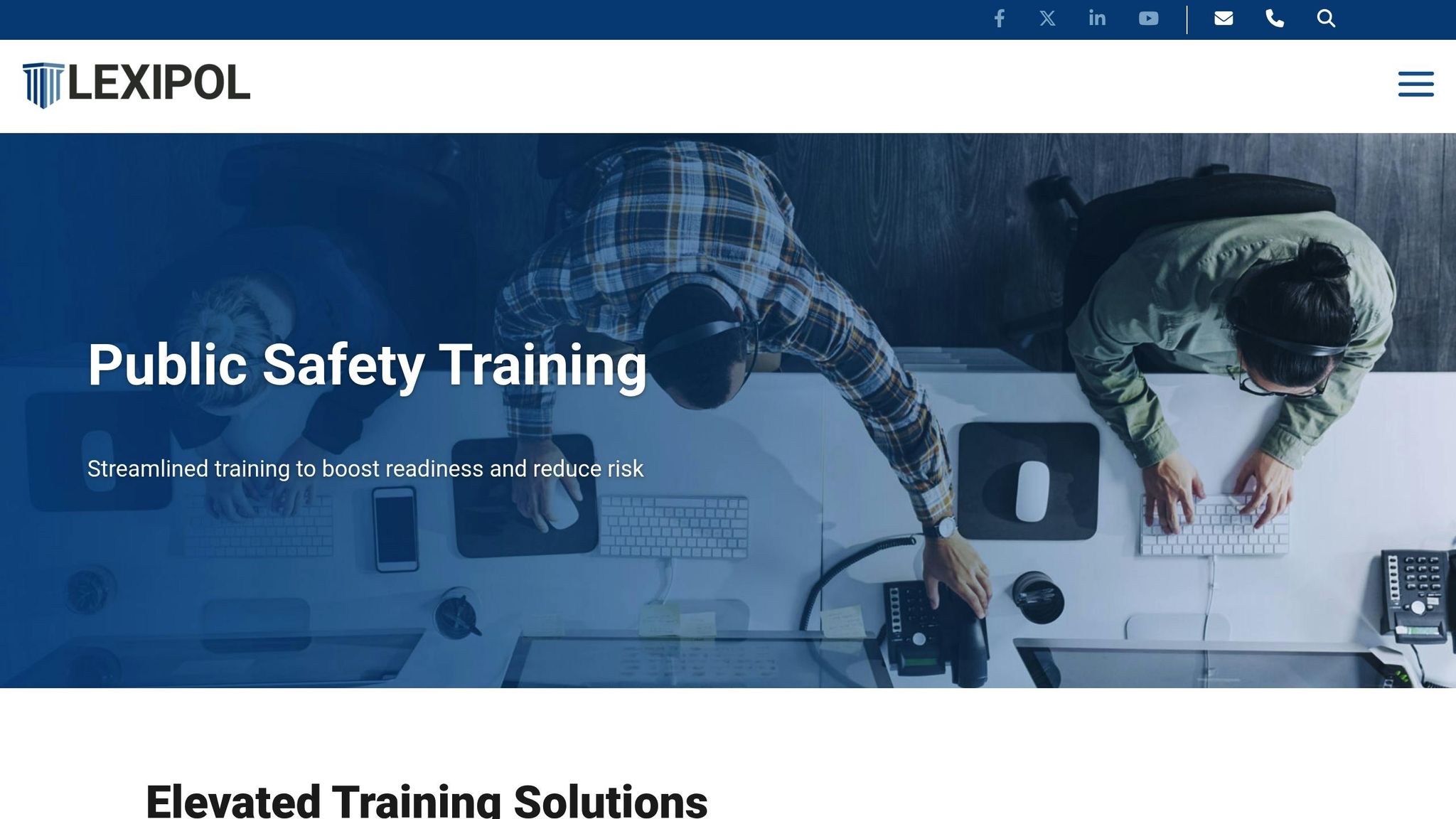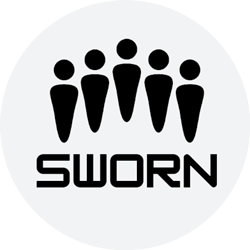First responders face mental health challenges at rates far higher than the general population. Depression, PTSD, and suicide are critical issues among emergency personnel. Virtual peer support platforms are changing this by offering private, 24/7 access to help and connections with others who truly understand their struggles.
Key Takeaways:
- 85% of first responders report mental health symptoms like depression and PTSD.
- Suicide is a leading cause of death among first responders.
- Virtual peer support platforms (e.g., SWORN.ai) offer privacy, real-time assistance, and tailored resources.
- Features include group discussions, one-on-one messaging, and AI-driven insights from biometric data.
- Accessible anytime, these tools help first responders discreetly manage mental health challenges and build supportive communities.
Virtual peer networks combine technology and peer connection to address the unique mental health demands of first responders. They provide immediate, personalized support, breaking down barriers like stigma and limited access to traditional resources.
The Power of Peer Support for First Responders – Lexipol

Main Advantages of Online Peer Networks
Online peer support networks are breaking down barriers for first responders, offering accessible and effective help when it’s needed most. Here are three key ways these platforms make a difference.
Privacy and Anonymous Support
For first responders, privacy is often a major hurdle when seeking mental health support. Virtual peer support platforms, like SWORN.ai, address this concern by prioritizing confidentiality. These platforms include privacy-focused tools that allow users to monitor their mental health progress without fear of judgment – critical, considering 85% of first responders report experiencing mental health challenges.
To ensure safety, advanced data anonymization protects personal details while still providing tailored support recommendations. And beyond safeguarding identity, these platforms are designed to offer help anytime it’s needed.
Always-Available Support
Emergency personnel often work unpredictable hours, making traditional support options less practical. Virtual peer networks solve this issue by being available 24/7. Whether it’s during a late-night shift or a quick break between calls, first responders can access help whenever they need it.
This around-the-clock availability is especially important given the high rates of depression and PTSD among first responders. Immediate support during stressful or traumatic moments can be a lifeline.
Peer Connection and Support
Privacy and accessibility are essential, but connecting with others who truly understand your experiences is equally important. Virtual peer networks create spaces where first responders can share their challenges with colleagues who "get it." These platforms build communities of shared understanding, allowing users to exchange coping strategies and support.
By leveraging data from real-world experiences, these platforms match individuals with peers who have faced similar struggles. This sense of connection is vital, especially when suicide remains a leading cause of death for first responders.
Through these platforms, first responders gain the ability to:
- Seek help discreetly
- Access support 24/7
- Build connections with peers who share similar experiences
These features make online peer networks a powerful resource for addressing the mental health needs of emergency service professionals.
Core Elements of Online Support Networks
Online peer networks offer essential support for first responders, combining technology and human interaction to provide tailored, 24/7 assistance. These platforms are designed to meet the unique needs of first responders, creating a reliable and accessible support system.
Platform Tools and Options
Virtual support platforms provide multiple ways for first responders to connect and share. Some key features include:
- Group discussions: A space for sharing experiences and strategies with peers.
- One-on-one messaging: Private conversations with trusted colleagues or support specialists.
- Discussion boards: A forum where users can post questions and receive thoughtful responses at their own pace.
These tools give first responders the flexibility to seek help and share insights in ways that suit their comfort level and schedule.
Support Specialist Functions
Trained support specialists are vital for fostering a positive and constructive online community. Their responsibilities include:
- Steering conversations toward helpful, constructive outcomes.
- Identifying individuals who may need extra support.
- Ensuring discussions remain respectful and on-topic.
- Connecting members with the right resources.
- Monitoring group dynamics and stepping in when necessary.
By creating a safe and welcoming environment, support specialists encourage open discussions about difficult topics, helping members feel supported and understood.
Technology-Driven Support Features
Technology has reshaped how virtual peer support networks operate, offering tools that enhance both the experience and effectiveness of these platforms. For example, SWORN.ai integrates AI-driven features to provide personalized support. It uses real-time biometric data from wearable devices to monitor physical and mental wellness, offering tailored insights and recommendations.
The platform also gathers data through private surveys, focusing on key areas of first responders’ lives:
| Data Category | Purpose | Impact |
|---|---|---|
| Physical Health | Tracks vital signs and activity | Highlights stress patterns and recovery needs |
| Work Performance | Monitors workload and response times | Helps manage burnout and improve scheduling |
| Personal Wellness | Assesses relationships and finances | Offers well-rounded support tailored to individual needs |
sbb-itb-aa48905
Using Online Peer Support
Finding Reliable Support Programs
First responders face unique mental health challenges, making dependable virtual support essential. When evaluating programs, focus on platforms offering:
- Real-time health tracking
- Tailored AI-driven recommendations
- Secure communication channels
- Access to professional resources
One example is SWORN.ai, which integrates AI technology with data from wearable devices. This combination provides science-backed support for both physical and mental well-being.
Getting Started
Once you’ve chosen a trustworthy platform, here’s how to begin:
| Phase | Actions | Benefits |
|---|---|---|
| Assessment | Fill out a wellness survey and link devices | Establishes a personalized support plan |
| Profile Setup | Adjust privacy and communication settings | Ensures a comfortable experience |
| Resource Review | Explore tools and support options | Helps you understand how to use the platform effectively |
Making It Part of Your Routine
Consistency is key to getting the most out of any support program. Build these habits into your schedule:
Daily Practices:
- Check biometric data
- Review AI-generated recommendations
- Engage with peer support networks
Weekly Activities:
- Participate in group discussions
- Monitor progress toward wellness goals
- Use self-care tools and resources
Staying active on the platform not only boosts personal resilience but also strengthens connections within the first responder community. Regular use fosters long-term mental and physical wellness.
Setting Up Effective Support Programs
Support Staff Preparation
Effective virtual peer support starts with well-trained staff, especially given the high rates of depression and PTSD among first responders. Key training areas include:
| Training Area | Key Components | Purpose |
|---|---|---|
| Mental Health Awareness | Crisis intervention, PTSD recognition, suicide prevention | Helps identify critical issues early |
| Confidentiality Protocols | Data privacy, secure communication, HIPAA compliance | Builds trust and ensures legal compliance |
| Digital Platform Skills | Biometric data interpretation, AI tools, virtual communication | Enhances the use of technology effectively |
Integrating With Current Programs
Adding virtual support tools to existing mental health programs can improve outcomes without disrupting what’s already in place. Here’s how to approach integration:
-
Assessment Phase
Review current support programs to identify where digital tools can fill gaps. This involves analyzing existing resources and pinpointing areas where virtual solutions can make the biggest impact. -
Implementation Strategy
Roll out virtual tools gradually, allowing time for adjustment and refinement. For instance, SWORN.ai’s platform uses AI to monitor biometrics in real-time and provide tailored interventions, complementing traditional methods. -
Resource Allocation
Balance resources between current programs and new virtual tools to ensure both systems work together seamlessly, offering comprehensive care.
Regular follow-ups are necessary to ensure the integration remains effective and meets its goals.
Program Updates and Changes
Improving support programs is a continuous process, especially since suicide remains a leading cause of death for first responders. Regular evaluations should include:
- Monthly Performance Reviews: Measure engagement and track outcomes.
- Quarterly Feedback Sessions: Collect insights from staff and participants.
- Biannual Program Adjustments: Update policies and protocols based on data and feedback.
These steps help keep the program relevant and responsive to the needs of first responders.
Conclusion
The mental health challenges faced by first responders require solutions that effectively blend technology with human care. These support systems must be designed to meet the unique needs of those who serve on the front lines.
AI-powered platforms like SWORN.ai are making strides in first responder care. By combining real-time biometric tracking with tailored interventions, these tools provide targeted support exactly when it’s needed most.
"They Protect Us. SWORN Protects Them." – SWORN.ai
Modern virtual support systems focus on three essential areas for improving first responder wellbeing:
| Focus Area | Impact | Outcome |
|---|---|---|
| Immediate Access | Around-the-clock availability | Better crisis management and prevention |
| Privacy Protection | Secure and anonymous use | Increased participation in programs |
| Personalized Care | Data-driven approaches | Enhanced overall wellness |
The future of mental health support for first responders lies in solutions that integrate advanced technology with meaningful human interaction. By utilizing AI-driven tools that provide personalized recommendations, self-care resources, and timely interventions, departments can more effectively support those who protect their communities.
The path forward requires combining technological advancements with compassionate care to address the ongoing challenges faced by first responders.





